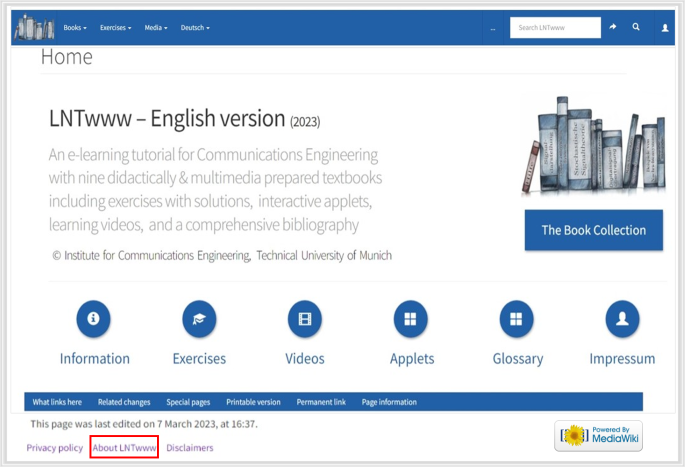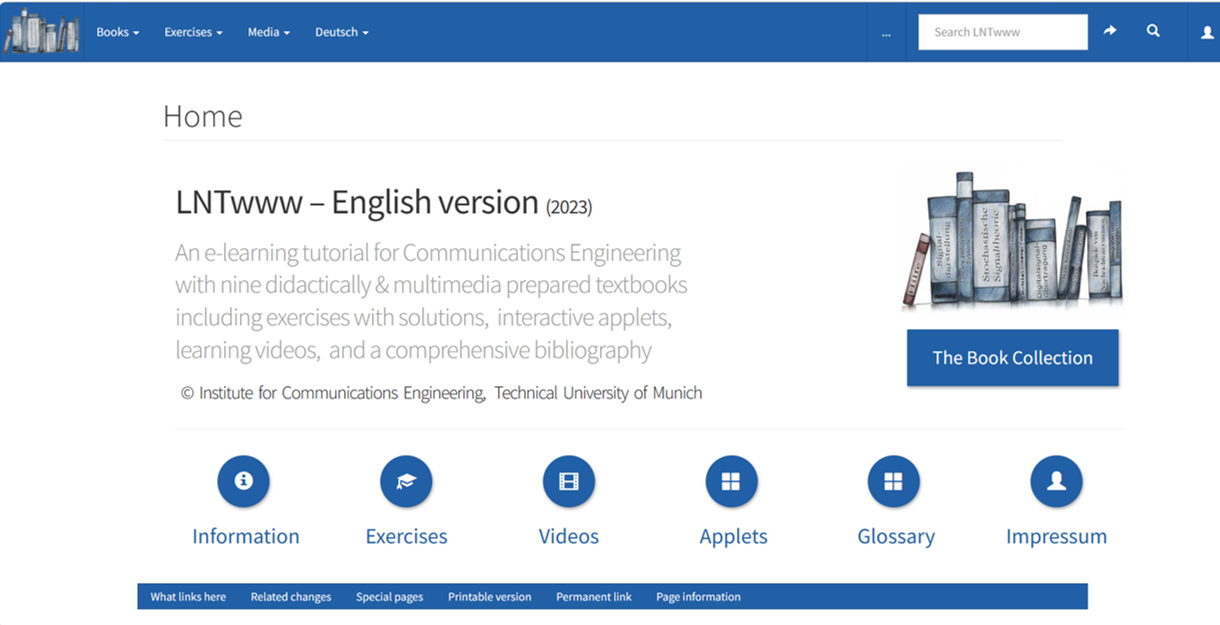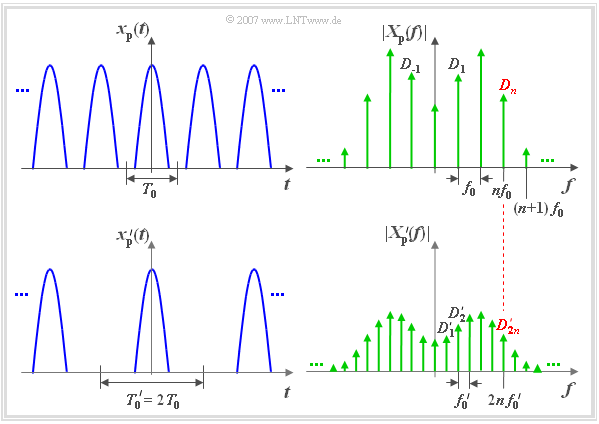Difference between revisions of "An e-learning project for Communications Engineering - LNTwww"
| Line 14: | Line 14: | ||
| − | + | Other important project features are summarized in the file »About LNTwww« $($red marked link$)$, among others: | |
* [https://en.lntwww.de/LNTwww:About_LNTwww#.28A.29_The_didactic_concept_of_LNTwww The didactic concept of LNTwww], | * [https://en.lntwww.de/LNTwww:About_LNTwww#.28A.29_The_didactic_concept_of_LNTwww The didactic concept of LNTwww], | ||
Revision as of 16:41, 5 January 2024
The e-learning project »LNTwww« offered by the »TUM Institute for Communications Engineering« provides nine online courses on the subjects of »Communications Engineering« $\rm (CE)$ and »Information and Communication Technology« $\text{(I&C)}$. The target group of our online offer are students of these or similar disciplines as well as practicing engineers and scientists.
The German version »www.LNTwww.de« was created between 2001–2021. At the beginning of corona $($2020$)$ we started the English translation, in 2023 we finished. In this article we refer to the English version »en.lntwww.de«, whose homepage can be seen in the graphic.
Here are some features of our e-learning platform:
- »LNTwww« is freely accessible. Registration is not necessary and no system requirements are needed.
- »LNTwww« uses the free server-based software »MediaWiki«, just like »Wikipedia«, the best-known free encyclopedia.
- The link »Book Collection« takes you to the nine courses, which are here referred to as »books«, and to the collection »Biographies and Bibliographies«.
- The link »Exercises« takes you to a list of the about $640$ exercises in all books $(3100$ subtasks$)$, each with a detailed sample solution.
- You can access $\approx30$ German–language learning videos via the link »Videos«. These are offered grouped according to the individual courses.
- Via the link »Applets« you also have access to $24$ English–language HTML5/JavaScript applets and some older shockwave flash applets.
Other important project features are summarized in the file »About LNTwww« $($red marked link$)$, among others:
Hier die einzige Grafik entsprechend diesem Link Home und einigen Markierungen. Bildunterschrift:
Home page of the English version with link markers
(Home) https://en.lntwww.de/Home
(A) https://en.lntwww.de/LNTwww:About_LNTwww
(B) https://en.lntwww.de/Book_Overview
(C) https://en.lntwww.de/LNTwww:Information
(D) https://en.lntwww.de/Exercises:Exercise_Overview
(E) https://en.lntwww.de/LNTwww:Videos
(F) https://en.lntwww.de/LNTwww:Applets
(G) https://en.lntwww.de/LNTwww:Glossary
(H) https://en.lntwww.de/LNTwww:LNTwww_Impressum
(I) https://www.lntwww.de/Startseite
$\text{Example 1:}$ To illustrate these texts, here is an example of how to use our learning tutorial:
$(1)$ After pressing the »Book Collection« button, a selection screen appears with the nine textbooks as well as the book »Biographies and Bibliographies«.
$(2)$ After selecting the »Information Theory course«, its »start page« appears with links to four main chapters and to exercises, multimedia elements and literature.
$(3)$ We now select the first main chapter »Entropy of Discrete Sources« and of this in turn the first subchapter »Discrete Memoryless Sources« with eight sections.
$(4)$ This exemplary subchapter explains the procedure for calculating the entropy of binary and non-binary sources. As in conventional mathematical and technical literature, the facts are illustrated by texts, models, graphs, diagrams, equations and derivations.
$(5)$ The last two sections of each subchapter are exercises and references to the topic covered.


